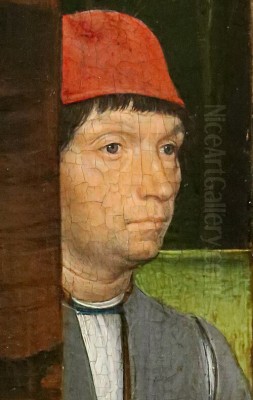
Hans Memling stands as one of the most significant and prolific painters of the Early Netherlandish period. Active primarily in Bruges during the latter half of the 15th century, he developed a distinctive style characterized by serene elegance, meticulous detail, and luminous colour. While deeply rooted in the traditions established by his predecessors, Memling forged a unique artistic identity that resonated with patrons across Europe and left a lasting legacy on the course of Western art. His work, encompassing devotional panels, grand altarpieces, and insightful portraits, offers a window into the pious and prosperous world of late medieval Flanders.
Origins and Early Uncertainties
Pinpointing the precise beginnings of Hans Memling's life involves navigating some historical ambiguity, though a consensus has emerged. He is widely believed to have been born around 1430, possibly as late as 1435, in Seligenstadt, a small town near Frankfurt am Main in present-day Germany. His German origins are supported by civic records and his name's etymology. Some early accounts mistakenly identified him as Flemish, a confusion perhaps arising from his long and successful career in Bruges.
Details of his earliest training remain speculative. It is plausible that he received initial instruction in the artistic centres of the Middle Rhine, possibly Mainz or Cologne. These cities had established painting traditions, and exposure to German masters there could have laid the groundwork for his later technical proficiency. However, no documented evidence confirms his specific activities or teachers during this formative period before his documented presence in the Low Countries.
Apprenticeship with Rogier van der Weyden
The most crucial formative influence on Memling's artistic development was undoubtedly his time spent with Rogier van der Weyden, the preeminent painter in Brussels and official painter to the city. While direct documentation is lacking, stylistic analysis strongly suggests Memling worked in Van der Weyden's large and influential workshop, likely between the mid-1450s and Van der Weyden's death in 1464.
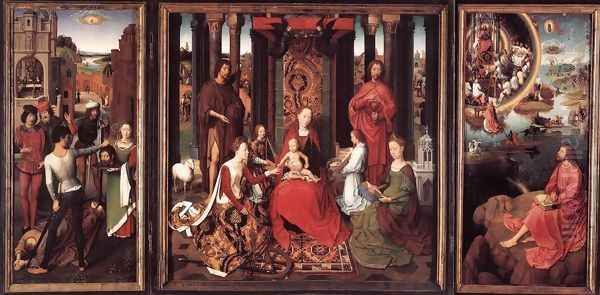
From Van der Weyden, Memling absorbed a mastery of composition, a sophisticated understanding of oil painting techniques, and a capacity for conveying human emotion, albeit expressed with more restraint than his master's often dramatic pathos. He learned the meticulous underdrawing techniques characteristic of the workshop, often revealed today through infrared reflectography. Works like Memling's Morgan Annunciation show clear debts to Rogierian models in figure types and spatial arrangement, yet already hint at Memling's tendency towards calmer, more lyrical interpretations.
Settling in Bruges: A Flourishing Career
Following the death of Rogier van der Weyden, Memling moved north to Bruges, the bustling commercial and artistic heart of Flanders. He is documented as acquiring citizenship in Bruges on January 30, 1465, a necessary step for establishing himself independently. Soon after, he likely joined the Guild of Saint Luke, the city's corporation for painters and other artists working in related fields like manuscript illumination.
Memling rapidly achieved remarkable success. Bruges, despite facing growing economic challenges from Antwerp, remained a wealthy city with a sophisticated clientele. His patrons included local burghers, clergy, members of the resident foreign merchant colonies (especially Italians and Spanish), and high-ranking officials of the Burgundian court. His workshop became highly productive, fulfilling commissions for large altarpieces, smaller devotional works for private contemplation, and numerous portraits. His prosperity is evidenced by his purchase of a large stone house in 1466 and later another property, placing him among the city's wealthiest citizens by the 1480s.
Artistic Style: Synthesis and Serenity
Memling's art is often characterized by its pervasive sense of calm, harmony, and refined elegance. While building upon the foundations laid by Jan van Eyck and Rogier van der Weyden, he synthesized these influences into a style distinctly his own. He adopted Van Eyck's meticulous attention to detail and mastery of light effects, rendering textures like jewels, brocades, and reflective surfaces with astonishing verisimilitude. However, he softened the intense realism of Van Eyck, imbuing his figures with a gentle grace and idealized beauty.
From Van der Weyden, he inherited strong compositional structures and expressive figure types, but he tempered Rogier's emotional intensity. Where Van der Weyden often depicted moments of high drama and poignant suffering, Memling favoured quiet contemplation and serene devotion. His figures, typically slender and elegant, inhabit well-ordered spaces, often set against tranquil landscapes seen through windows or arcades. His colour palette is rich and luminous, achieved through the skillful layering of oil glazes, contributing to the overall impression of peaceful equilibrium and spiritual grace that defines his oeuvre.
Influences: Van Eyck, Van der Weyden, and Beyond
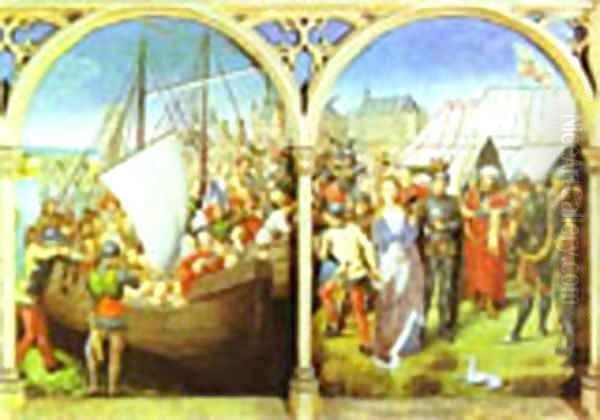
Memling's artistic vocabulary was shaped by a deep engagement with the leading masters of the previous generation. The legacy of Jan van Eyck, who had died in Bruges in 1441 but whose influence remained potent, is evident in Memling's handling of light, his detailed rendering of surfaces, and his approach to portraiture, particularly the three-quarter view and the inclusion of symbolic details.
The impact of his presumed master, Rogier van der Weyden, is pervasive, seen in compositional formulas, figure types, and the careful orchestration of narrative scenes. Memling frequently adapted and refined motifs originated by Van der Weyden. However, he consistently translated Rogier's more angular forms and intense emotionalism into a smoother, more placid idiom.
Memling also appears to have looked closely at the work of Dieric Bouts, a painter active in Leuven whose style shared certain affinities with Memling's own measured calm. Specific compositional ideas and decorative motifs, such as elaborate brocades and architectural framing devices, may reflect Bouts's influence. Some scholars also suggest connections or shared influences with Hugo van der Goes, particularly in the rendering of expressive faces, though Van der Goes's work generally possesses a greater psychological intensity. Furthermore, Memling's contact with Italian patrons in Bruges exposed him to Italian Renaissance art, potentially influencing his use of loggias and certain decorative elements, possibly reflecting knowledge of artists like Giovanni Bellini or Perugino.
Masterpieces of Religious Art
Memling excelled in the creation of religious works, which formed the bulk of his output. Among his most celebrated achievements is the large Triptych of the Mystic Marriage of St Catherine, also known as the St John Altarpiece, completed in 1479 for the Sint-Janshospitaal (St John's Hospital) in Bruges, where it remains today. The central panel depicts the Virgin and Child enthroned, flanked by saints including the two patron saints of the hospital, John the Baptist and John the Evangelist. The side wings show the Beheading of John the Baptist and the Vision of John the Evangelist on Patmos. The work is a prime example of Memling's mature style: balanced composition, serene figures, exquisite detail, and a harmonious integration of figures within architectural and landscape settings.
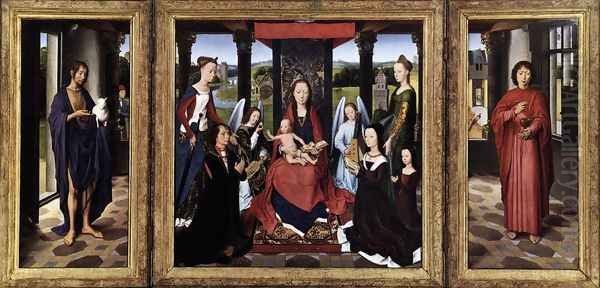
Another major work is The Last Judgment Triptych (c. 1467-1471), now in Gdańsk, Poland. Commissioned by Angelo Tani, an agent of the Medici bank in Bruges, it is one of Memling's most dramatic compositions, depicting Christ in Majesty presiding over the separation of the blessed and the damned. Despite the subject matter, Memling maintains a sense of order and clarity, rendering the multitude of figures with remarkable precision.
The Shrine of St Ursula, also housed in the Sint-Janshospitaal (Memling Museum), is another masterpiece. Completed around 1489, this gilded and painted wooden reliquary, shaped like a miniature Gothic chapel, features six panels narrating the legend of St Ursula and her companions with charm and narrative skill. Other significant religious works include numerous depictions of the Virgin and Child, often in half-length format for private devotion, the Donne Triptych (National Gallery, London), and the expansive Seven Joys of the Virgin (Alte Pinakothek, Munich).
Pioneering Portraiture
Alongside his religious commissions, Memling was a highly sought-after portraitist. His portraits are renowned for their sensitive likenesses, refined execution, and the calm dignity they bestow upon the sitters. He typically employed the three-quarter view popularized by Van Eyck and Van der Weyden, but he often placed his subjects against landscape backgrounds glimpsed through a window or, innovatively, behind a loggia with columns, a motif likely borrowed from Italian art. This integration of the sitter with an atmospheric background adds depth and context, moving beyond the plain dark backgrounds often used previously.
His sitters included wealthy Italian merchants and bankers residing in Bruges, such as Tommaso Portinari and his wife Maria Maddalena Baroncelli, whose portraits (c. 1470, Metropolitan Museum of Art, New York) are among his finest. The portrait believed to depict the Venetian humanist Bernardo Bembo, known as the Man with a Roman Coin (c. 1473-74, KMSKA, Antwerp), exemplifies Memling's ability to convey intellectual refinement. He also painted numerous portraits of local Bruges citizens and Burgundian courtiers, often depicted in prayer, sometimes forming diptychs with a panel of the Virgin and Child. These works capture not only physical appearance but also a sense of the sitter's piety and social standing.
Technique and Workshop Practice
Memling's technical brilliance was fundamental to his success. He worked primarily in oil paint on oak panels, employing the additive glazing technique perfected by earlier Netherlandish masters. By applying thin, translucent layers of pigment bound in oil over a light ground, he achieved exceptional luminosity, deep saturated colours, and subtle tonal gradations. His meticulous brushwork allowed for the rendering of minute details with astonishing precision.
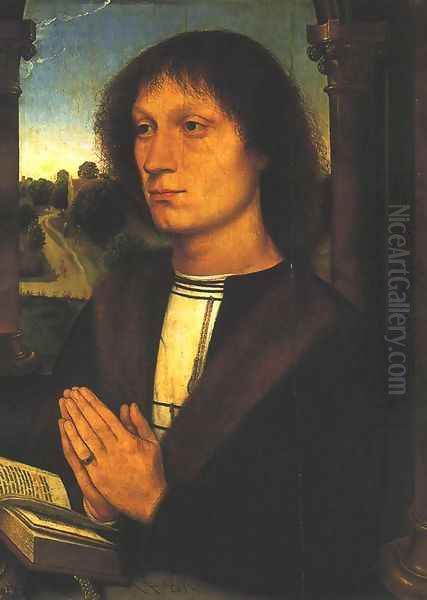
Infrared reflectography studies of his paintings reveal detailed underdrawings, often executed with a brush. These preparatory sketches map out the composition and details, showing that Memling planned his works carefully, though he sometimes made minor adjustments (pentimenti) during the painting process. The style of underdrawing often echoes practices associated with the Van der Weyden workshop.
Given the volume of work produced, it is certain that Memling maintained an active workshop with assistants. While the master himself would have been responsible for the overall design and key passages, particularly faces and hands, assistants likely contributed to backgrounds, drapery, and replicas or variations of successful compositions under his supervision. However, the consistently high quality and stylistic coherence of works attributed to Memling suggest rigorous oversight.
Anecdotes and Legends
Like many famous artists of the past, Memling's biography became embellished with anecdotes, some of questionable historical accuracy. The most persistent story, popularized by later writers like Giorgio Vasari and Karel van Mander, concerns his supposed involvement in the Battle of Nancy (1477), where Charles the Bold, Duke of Burgundy, was killed. According to the legend, Memling fought in the battle, was wounded, and subsequently found refuge at the Sint-Janshospitaal in Bruges. In gratitude for the care he received, he supposedly painted several works for the hospital free of charge. While Memling did indeed execute major commissions for the hospital, there is no contemporary evidence to support his participation in the battle or this romantic tale of gratitude; his relationship with the hospital seems to have been a standard patron-artist arrangement.
Another, more obscure, reference mentions a "Snow Madonna Pillow" symbolism in one of his Virgin and Child paintings, possibly relating to purity. There's also a suggestion that difficulties surrounding his burial arrangements (perhaps not within a church proper) reflected the economic downturn affecting Bruges towards the end of his life, though concrete details are scarce. These stories, true or not, contributed to the artist's mystique over the centuries.
Interaction with Contemporaries
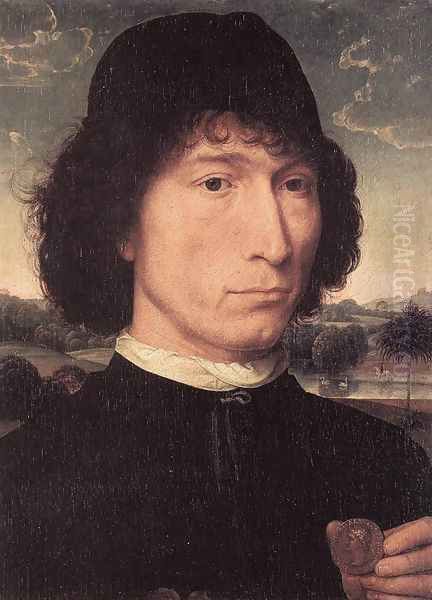
While direct records of Memling's personal interactions with other artists are limited, his position in Bruges placed him at the centre of a vibrant artistic community. He would have known other painters active in the city who were members of the Guild of Saint Luke, such as the documented but less famous Herman de Porck and David Grégoire. His style certainly influenced younger Bruges painters, most notably Gerard David, who became the leading painter in the city after Memling's death and carried forward elements of his serene style and technical refinement.
His most significant interactions, however, may have been with his international clientele. His work for Italian patrons like the Tani, Portinari, and Bembo families, as well as Spanish clients, demonstrates Bruges's role as a cosmopolitan centre and Memling's ability to satisfy discerning foreign tastes. This exposure likely facilitated a two-way exchange of artistic ideas, with Memling absorbing some Italianate motifs while his own works were exported and admired abroad, potentially influencing Italian artists like Perugino, Ghirlandaio, and even the young Raphael. Albrecht Dürer, during his visit to the Low Countries in 1521, specifically noted seeing Memling's work at the Sint-Janshospitaal.
Later Reputation and Legacy
Hans Memling enjoyed considerable fame during his lifetime and in the decades immediately following his death in Bruges on August 11, 1494. Early writers like the Bruges notary Publicola praised him as the "most skillful painter in the whole Christian world." Italian sources also acknowledged his stature. However, as artistic tastes shifted, particularly with the rise of the Italian High Renaissance and later Baroque styles, his reputation, like that of many Early Netherlandish masters, faded somewhat.
A significant revival of interest began in the 19th century, particularly fueled by German and British Romantics and scholars who admired the perceived piety and detailed craftsmanship of early Northern European art. Memling came to be seen as a quintessential master of this tradition. In the 20th century, art historical assessments varied. While some, like the influential Erwin Panofsky, categorized him as a supremely talented but perhaps less innovative "major minor master" compared to giants like Van Eyck or Van der Weyden, subsequent scholarship has often taken a more positive view.
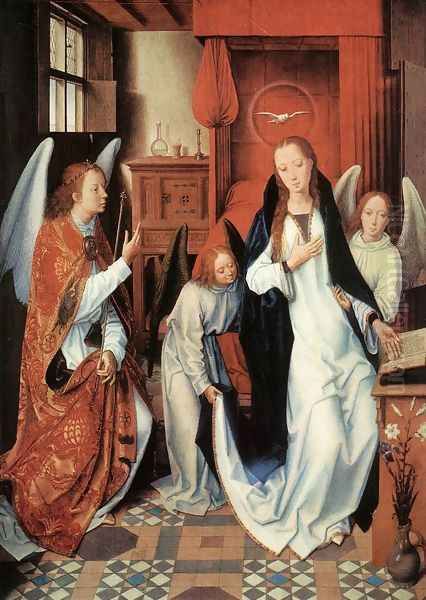
Today, Memling is firmly established as one of the most important painters of the Northern Renaissance. His works are prized for their technical perfection, aesthetic beauty, and tranquil spirituality. Major exhibitions and continued research have reaffirmed his significance, highlighting his skillful synthesis of existing traditions, his innovations in portraiture, and his profound influence on subsequent generations of artists both north and south of the Alps, including figures as diverse as Leonardo da Vinci and the contemporary artist Kehinde Wiley. His legacy endures in the numerous masterpieces preserved in Bruges and in major museums worldwide.
Conclusion: A Master of Serene Refinement
Hans Memling navigated the artistic landscape of the late 15th century with exceptional skill and success. Emerging from the shadow of Rogier van der Weyden, he forged a distinctive artistic identity rooted in technical mastery, serene compositions, and a gentle, idealized vision of humanity and faith. Based in the thriving, cosmopolitan city of Bruges, he catered to a diverse and demanding clientele, producing a large body of work characterized by its consistent quality and refined elegance. From monumental altarpieces to intimate portraits, his paintings offer a compelling blend of meticulous realism and peaceful harmony. Though his reputation fluctuated over the centuries, Hans Memling is now rightfully recognized as a pivotal figure in the Northern Renaissance, a master whose tranquil and luminous art continues to captivate viewers today.